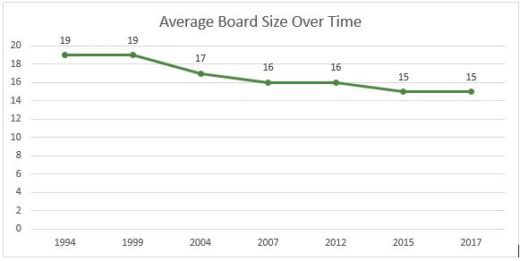
What is the optimal size for a nonprofit board?
Is it possible to have too few board members? Or too many? This and other questions are examined periodically by BoardSource in their Leading with Intent study. The 2017 report illustrated some interesting trends in the composition of nonprofit boards.
“Goldilocks” Board — Not Too Big, Not Too Small
While there is no magic formula for how many members should serve on a nonprofit board, it is possible to have too few or too many.
With too few board members, an organization can face multiple challenges:
- Not enough expertise and too few perspectives to make wise decisions.
- Limited influence on and oversight of the executive director.
- Limited access to networks needed to secure funding and influence.
On the other hand, too many board members can cause a different set of problems:
- Full-board conversations become difficult and unwieldy.

- Real deliberation then shifts to the executive committee.
- Participation becomes almost an honorary position, rather than a governing role.
Over the past 20 years, the average nonprofit board size has decreased from 19 members to 15 members, with a median of 13.
But averages don’t tell the whole story. Some organizations require larger boards and others do very well with smaller, more nimble boards. Much depends on what the board needs to accomplish and what kind of expertise is needed to accomplish it. Most experts agree that a group of 7 to 15 people is optimal for effective decision making.
How Big is Your Board?
What policies has your organization adopted concerning the size of your board? What factors did you consider in your decision? What do you think the ideal board size is? Please share your insights in the comments below. We’d love to hear what works.
